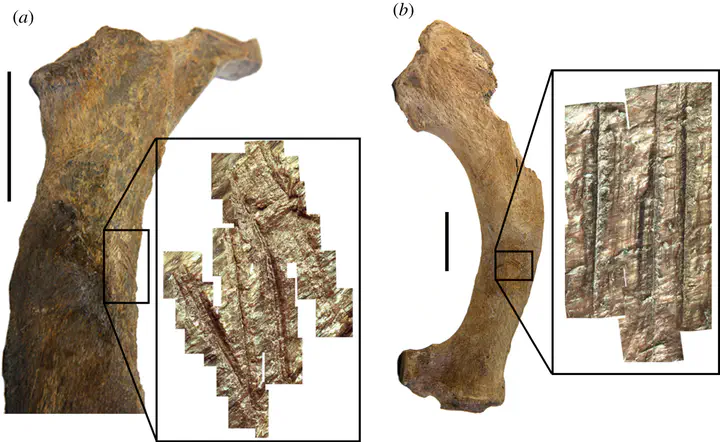Deep classification of cut-marks on bones from Arroyo del Vizcaíno (Uruguay)

Abstract
The earliest widely accepted presence of humans in America dates to approximately 17.5 cal kyr BP, at the end of the Last Glacial Maximum (LGM). Among other evidence, this presence is attested by stone tools and associated cut-marks and other bone surface modifications (BSM), interpreted as the result of the consumption of animals by humans. Claims of an older human presence in the continent have been made based on the proposed anthropogenic modification of faunal remains; however, these have been controversial due to the highly subjective nature of the interpretations. Here, we employ advanced deep learning algorithms to objectively increase the accuracy of BSM identification on bones. With several models that exhibit BSM classification accuracies greater than 94%, we use ensemble learning techniques to robustly classify a selected sample of BSM from the approximately 30 kyr BP site of Arroyo del Vizcaíno, Uruguay. Our results confidently show the presence of cut-marks imparted by stone tools on bones at the site. This result supports an earlier presence of humans in the American continent, expanding additional genetic and archaeological evidence of a human LGM and pre-LGM presence in the continent.